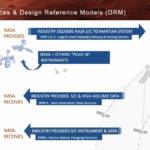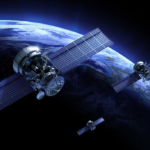The 54th anniversary of the Apollo 13 mission – which saw the successful return of its crew back to Earth after a disaster onboard the spacecraft – occurred in mid-April. It remains one of the great examples of the human spirit and ingenuity triumphing over seemingly insurmountable odds. It is also one of the great examples of American can-do innovation, grit, patience, determination and teamwork. Looking back, there are many important lessons we can learn from the Apollo 13 mission, as well as from the actions of the heroes both orbiting the moon and on the ground in NASA facilities.
At the top, one of the key things we can take away from Apollo 13 is how we view risk and how we incorporate success or accomplishment into overall planning. This is especially useful in multi-phase tasks that evolve over a longer term — such as a military operation or a major engineering project. There will be successes and setbacks along the path to an objective, but how we accept and respond to those ups and downs is key to achieving success. While any human spaceflight mission has a high degree of risk, by the spring of 1970 the basic ability to land people on the moon had been proven twice. Apollo 13 occurred just shy of one year after Apollo 11 and only five months after Apollo 12. With two successful back-to-back landings, some of the major concerns regarding moon landings had been put to rest.
However, the complications on Apollo 13 were mechanical, occurring on the spacecraft before the mission even got to the moon. In the grand scheme of things, all systems should have worked —– after all, systems are continuously and repeatedly tested and inspected and, if shown to function properly, one has to assume they’ll work on a mission. In other words, a specific anomalous malfunction couldn’t have been known, even if the profile of potential risks would have included the chance of a hardware malfunction. But things happen. Components, gear and tools break, things get dropped and small specification changes are made — as happened on Apollo 13 with a small part and temperature regulator in an oxygen tank. Of course, how the mission crew and NASA dealt with that problem lies at the core of Apollo 13 story.
Another takeaway from Apollo 13 — which has real application to so many aspects of life — is the value of keeping a cool head when the chips are down, and maintaining clarity on the most important end-goal during times of uncertainty. Keeping composure when things aren’t going right is vital. It contributes to maintaining a clear vision of the desired end state and establishing the best course on how to get there. Related to this is the notion that there is always another way, another solution, another path to success. The stress and pressure of the Apollo 13 mission didn’t allow for a lengthy approach to the problem. The crew was running out of life support options rapidly — something I can appreciate being in the life support business. But the crew and NASA support persevered, considered alternatives, maintained composure and fought to find a solution. While the famous line “failure is not an option” was not actually stated by NASA Flight Director Gene Kranz during the Apollo 13 ordeal, the mindset exemplified by the phrase has fundamental merit and serves as a guiding principle for those who have to accomplish an objective.
Finally, Apollo 13 showed us two critical human-centric dynamics: the importance of teamwork and the nature of decision-making. Clearly, the eventual success getting astronauts Jim Lovell, Jack Swigert and Fred Haise back to Earth was due to the combined efforts of many people on the ground and in space, and it required constant triaging of challenges and ensuring that all parts of the endeavor were working in concert toward the end goal. It also necessitated some tough decision-making, even when a less-than-optimal amount of information was on hand to make the best decision. In fact, more often than not, leaders have to make decisions in this information gap environment — and in many cases, these two elements are related. Managing and leading teams of people effectively, and maintaining a balance between avoiding groupthink while listening to all members of a team, is something that leaders and decision-makers have to constantly address. Apollo 13 showed us what real and sound leadership looks like with serious, fateful consequences at the end of every decision.
The United States is facing a wide and complex range of challenges and threats at home and around the globe. At the same time, we must still press forth on our obligations, missions and priorities, from basic governance and domestic issues to national security, foreign policy, space and defense. It is a time where inaccurate risk assessment, miscalculation, soft leadership, disunity of purpose, and vacillation can quickly lead to tragedy. It is also a time where focus, commitment, clear thinking and a steady hand at the wheel are necessary to see us through the choppy waters. It would be well worth some reflection on past examples of great American leadership through times of uncertainty and crisis – like Apollo 13 — in order to ensure we have the right approach, attitude and mindset moving ahead.
Grant Anderson is the President and CEO of Paragon Space Development Corporation. He holds a B.S. in Mechanical Engineering and an M.S. in Aeronautical & Astronautical Engineering from Stanford University.
Related
Author Profile
- Space.com is an online publication focused on space exploration, astronomy, skywatching and entertainment, with editorial teams based in the United States and United Kingdom
Latest entries
 ScienceMay 18, 2024It’s time to figure out global space traffic management
ScienceMay 18, 2024It’s time to figure out global space traffic management ScienceMay 12, 2024National Space Council will explore military space and intelligence roles and responsibilities
ScienceMay 12, 2024National Space Council will explore military space and intelligence roles and responsibilities ScienceMay 5, 2024NASA awards studies for commercial Mars missions
ScienceMay 5, 2024NASA awards studies for commercial Mars missions ScienceMay 4, 2024Air Force project blends military and commercial space networks
ScienceMay 4, 2024Air Force project blends military and commercial space networks

